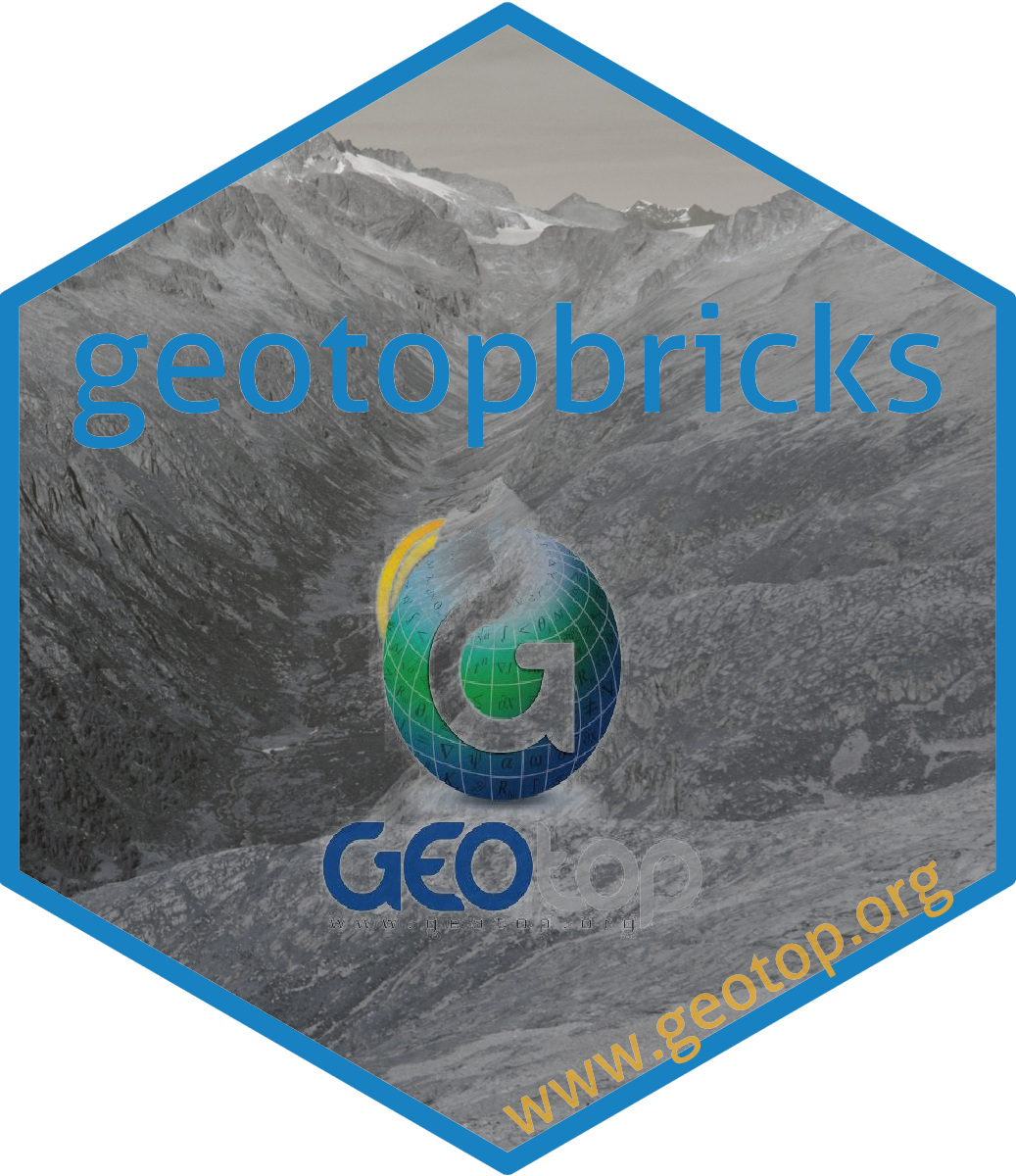The hardware and bandwidth for this mirror is donated by dogado GmbH, the Webhosting and Full Service-Cloud Provider. Check out our Wordpress Tutorial.
If you wish to report a bug, or if you are interested in having us mirror your free-software or open-source project, please feel free to contact us at mirror[@]dogado.de.
R plug-in Development of CRAN R package geotopbricks (http://cran.r-project.org/web/packages/geotopbricks)
To install this package on R fram R console:
>library(devtools)
>library(remotes)
>install_github("ecor/geotopbricks")


Try to run the following lines of code. More material also on https://github.com/ecor/geotopbricks_doc .
library(geotopbricks)
#Simulation working path
wpath <- 'https://raw.githubusercontent.com/ecor/geotopbricks_doc/master/simulations/panola13_run2xC_test3'
## wpath (RAW VERSION) of https://github.com/ecor/geotopbricks_doc/tree/master/simulations/panola13_run2xC_test3
prefix <- get.geotop.inpts.keyword.value("SoilLiqWaterPressTensorFile",wpath=wpath)
slope <- get.geotop.inpts.keyword.value("SlopeMapFile",raster=TRUE,wpath=wpath)
bedrock_depth <- get.geotop.inpts.keyword.value("BedrockDepthMapFile",raster=TRUE,wpath=wpath)
layers <- get.geotop.inpts.keyword.value("SoilLayerThicknesses",numeric=TRUE,wpath=wpath)
names(layers) <- paste("L",1:length(layers),sep="")
##### set van genuchten parameters to estimate water volume
theta_sat <- get.geotop.inpts.keyword.value("ThetaSat",numeric=TRUE,wpath=wpath)
theta_res <- get.geotop.inpts.keyword.value("ThetaRes",numeric=TRUE,wpath=wpath)
alphaVG <- get.geotop.inpts.keyword.value("AlphaVanGenuchten",
numeric=TRUE,wpath=wpath) # expressed in mm^-1
nVG <- get.geotop.inpts.keyword.value("NVanGenuchten",numeric=TRUE,wpath=wpath)
##### end set van genuchten parameters to estimate water volume
##### set meteo data
tz <- "Etc/GMT-1" ## See help(timezones) In particular:
## Most platforms support time zones of the form Etc/GMT+n and Etc/GMT-n (possibly also without prefix Etc/),
## which assume a fixed offset from UTC (hence no DST). Contrary to some expectations
## (but consistent with names such as PST8PDT), negative offsets are times ahead of (east of) UTC,
## positive offsets are times behind (west of) UTC.
start <- get.geotop.inpts.keyword.value("InitDateDDMMYYYYhhmm",date=TRUE,wpath=wpath,tz=tz)
end <- get.geotop.inpts.keyword.value("EndDateDDMMYYYYhhmm",date=TRUE,wpath=wpath,tz=tz)
nmeteo <- get.geotop.inpts.keyword.value("NumberOfMeteoStations",numeric=TRUE,wpath=wpath)
level <- 1:nmeteo
## set meteo data
meteo <- get.geotop.inpts.keyword.value("MeteoFile",wpath=wpath,data.frame=TRUE,
level=level,start_date=start,end_date=end,tz=tz)
##### end set meteo data
## IMPORTING AN OUTPUT SOIL MOISTURE PROFILE:
wpath <- 'https://raw.githubusercontent.com/ecor/geotopbricks_doc/master/simulations/Muntatschini_pnt_1_225_B2_004'
## wpath (RAW VERSION) of https://github.com/ecor/geotopbricks_doc/tree/master/simulations/Muntatschini_pnt_1_225_B2_004
## Not run:
SMC <- get.geotop.inpts.keyword.value("SoilLiqContentProfileFile",
wpath=wpath,data.frame=TRUE,date_field="Date12.DDMMYYYYhhmm.",
formatter="%04d")
SMCz <- get.geotop.inpts.keyword.value("SoilLiqContentProfileFile",
wpath=wpath,data.frame=TRUE,date_field="Date12.DDMMYYYYhhmm.",
formatter="%04d",zlayer.formatter="z%04d")
## End(Not run)
Repository containing source code / scripts of conference documentiation and presentations: https://github.com/ecor/geotopbricks_doc
UseR 2019, July 10, Toulouse,France presentation’s video: https://www.youtube.com/watch?v=sKMCyoOnpf8
These binaries (installable software) and packages are in development.
They may not be fully stable and should be used with caution. We make no claims about them.
Health stats visible at Monitor.